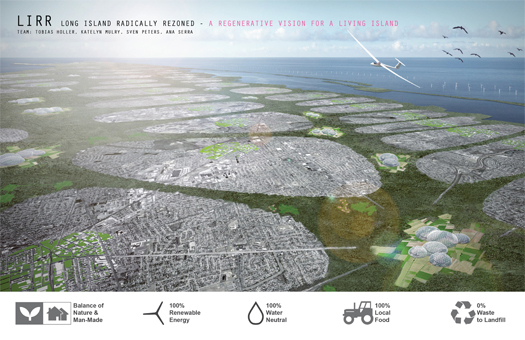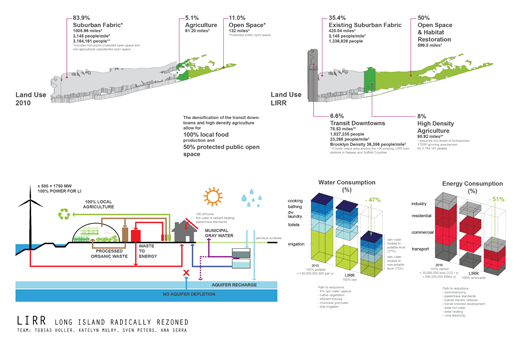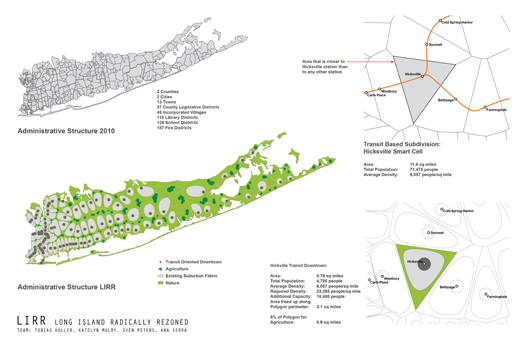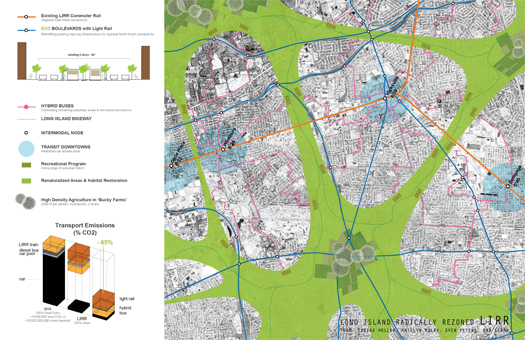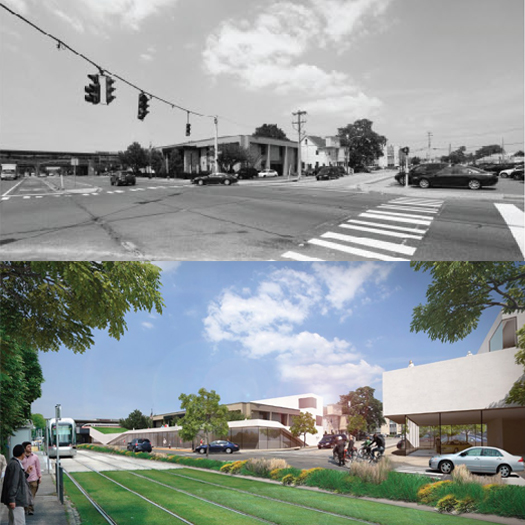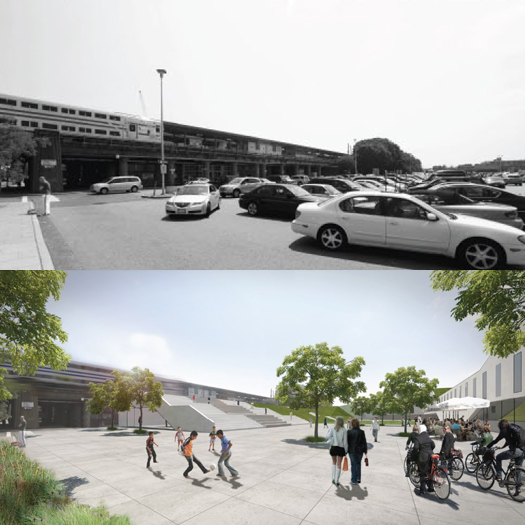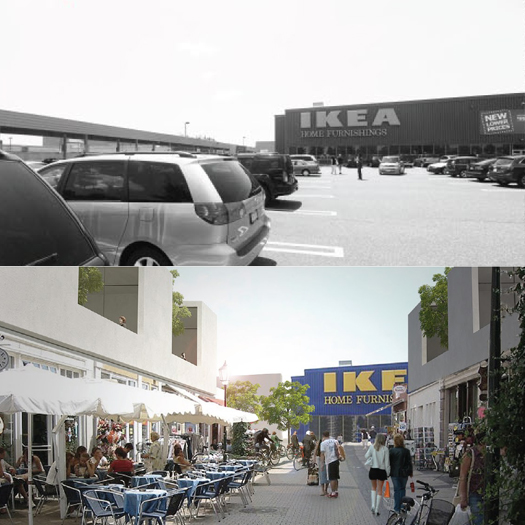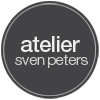LIRR : Long Island Radically Rezoned
in collaboration with Tobias Holler, Katlyn Mulry and Ana Serra
LIRR Long Island Radically Rezoned – a regenerative vision for a Living IslandResearch Project, 2010-2011People’s Choice Winner, Build a Better Burb competition, 2010 1st place, D3 Natural Systems competition, 2010Shortlisted, Living Cities Design competition, 2011Team: Tobias Holler, Ana Serra, Sven Peters, Katelyn MulryWhat if Long Island, currently comprising of 117 towns, became a single urban system entity, functioning as a city of 3.1 million inhabitants? Long Island’s most unique and defining condition is that of containment and the island itself – a spatial entity unable to expand beyond its own footprint. We explored the possibilities of conceptually capitalizing on this ‘insular’ condition and imagined Long Island as a ‘Living Island’, self-sufficient and regenerative. Through Radical Rezoning, this self-contained system, when looked at holistically, has the potential to provide all the necessary resources for its 3.1 million inhabitants, something currently not feasible due to its highly fragmented administrative structure. The relatively low density of suburbia coupled with the densification potential of the downtown areas present a unique opportunity to reintroduce large amounts of open space to the island while maintaining or even increasing its overall population capacity.The proposal aimed to envision how true sustainability may be achievable in Long Island by sharing resources across boundary lines, applying closed loop principles on a macro scale: water, energy and waste neutral and 100% local food production – a completely self-sufficient and waste free island. Sixty years after William Levitt built his first subdivision on the potato fields of the Hempstead Plains, Long Island once again can serve as a testing ground for new settlement patterns. What the project's video
